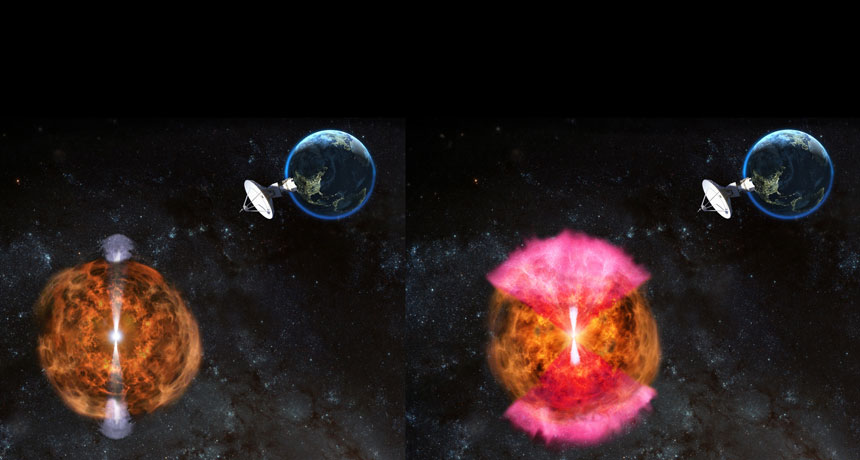Radio Jets Emitted by Neutron Star May be Faster Than Light

When two neutron stars collided the energy released was so intense that is seems to have overtook the speed of light.
The event, named GW170817 was registered in 2017 when it appeared to be situated at over 130 million years away. The clash resulted in a huge amount of radiation being released, and some of it reached Earth.
The wave that made it to Earth has lasted for almost 100 seconds, being followed by intense gamma-ray bursts. Jets of radio were not observed at that time, and it was theorized that they could have been covered by the gamma waves.
A group of researchers has proven in a recently published study that jets did take place. We did not recognize them in 2017 because they were so strong that they were able to travel at incredible speeds. After detailed measurements, a motion that could be up to four times faster than light The motion, called ‘’superluminal’’ may have also been an illusion created by the material contained in the traveling jet as it reached the speed of light, according to a statement by one of the lead researchers.
The phenomenon was observed 75 after the collision took place and check-up took place after 230 days. It is thought that a spherical pack of debris was ejected after the two stars merged. A black hole started to form as the two stars collapsed and began to be absorbed. As the material started to spin around the black hole, a superheated disk started to form and launched a pair of intense radio-signal jets toward Earth. The event was observed because the two stars and the debris sphere had a favorable position towards Earth, allowing the events to be analyzed and observed in detail.
If the jet had been pointed just a little in another direction, it could have missed Earth completely. Radio signal bursts have been spotted before but never as intense as those discussed in the study.
0 comments